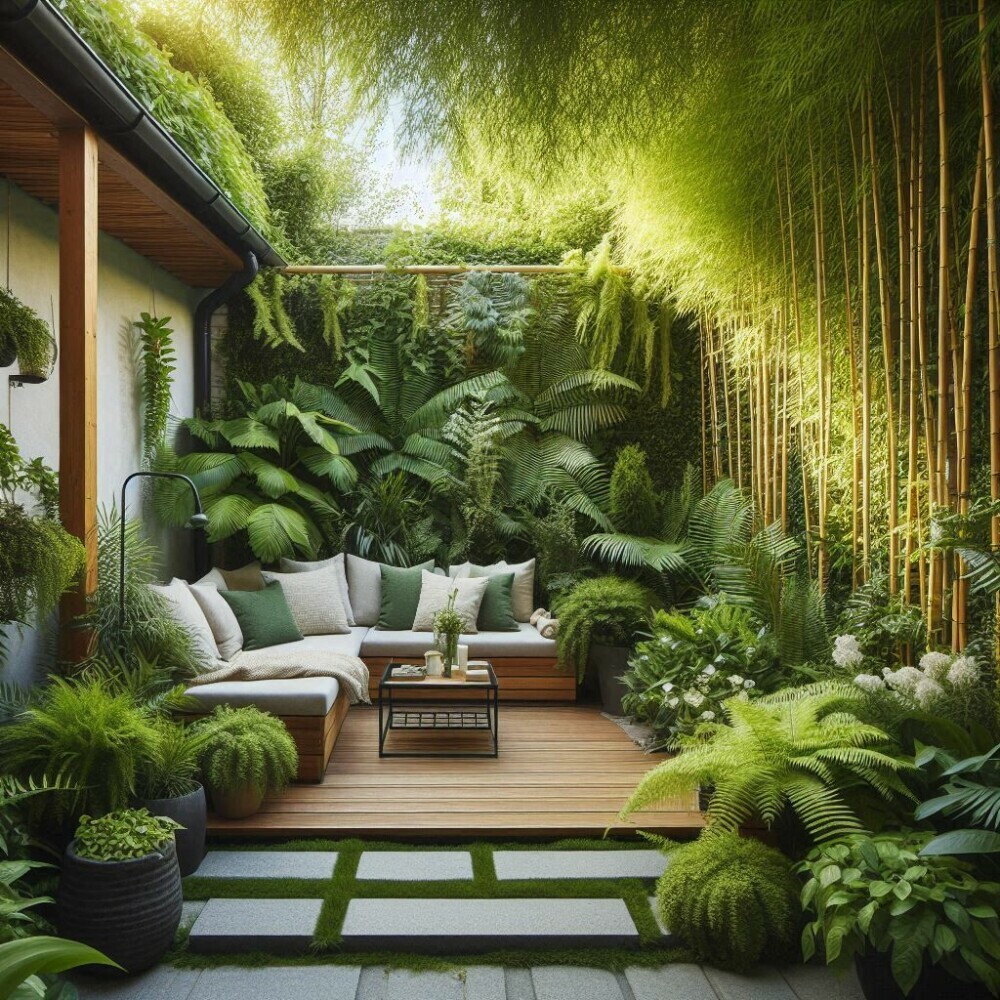
You’ll find out why seclusion is vital in your private outdoor oasis. We all crave a little peace; having that secluded spot at home is essential for unwinding and recharging. The constant buzz of the outside world, traffic noise, or chatty neighbors can sometimes disrupt the serene atmosphere you’re striving to create.
This isn’t just about blocking unwanted noise or sights; it’s also about crafting a space that’s purely yours, where you can relax fully. When you’re out in your garden or on your patio, the last thing you want is to feel like you’re on display. It’s a matter of comfort, safety, and peace of mind.
So, what’s a green thumb to do? Turn to nature itself. Plants are pleasing and can also form practical barriers that enhance outdoor privacy. I’m here to help you understand how to use lush foliage and towering trees to create your perfect backyard retreat.
Selecting the Right Plants for Natural Privacy Screens
You’ll learn the crucial steps to selecting the right plants that will thrive in your space and provide you with the privacy necessary to assess it. Consider factors like the amount of direct sunlight, soil type, and the general climate in your area. Different plants have different light and soil requirements; you’ll choose those that will grow well in your conditions.
There’s a significant difference between evergreens and deciduous plants regarding privacy plants. Evergreens retain their leaves all year, providing constant privacy, whereas deciduous plants shed their leaves in the fall, which may not be ideal for all-year screen coverage. Your choice will depend on whether you need privacy throughout the year or only during specific times.
Don’t worry too much about being a plant expert, as a few top choices are known for providing adequate privacy. For a dense hedge, consider classic options like boxwoods or privets. If you’re looking for something taller, cypress or arborvitae trees may be the way to go. Climbing plants like ivy or clematis on trellises can be a perfect fit for those spaces where you want privacy but don’t need more space.
Lastly, remember that privacy plants require care to establish a robust and healthy barrier. Annual pruning, proper watering, and fertilization are all part of the deal. You can constantly adjust your approach, but starting with a solid maintenance plan will ensure your green privacy screen stays lush and compelling for years.
Innovative Plant Arrangement Ideas for Enhanced Outdoor Seclusion
Your outdoor space isn’t juisn’tpatch of land; it’s a city waiting for you to paint your hideaway with greens. Let’s learn how to layer plants for a lush, private nook. Imagine an arrangement where tall trees provide a lofty canopy while smaller shrubs fill the midsection, and vibrant flowers or groundcovers add a touch of allure at your feet. This isn’t for seclusion; it also creates an inviting habitat for birds and beneficial insects.
Now, suppose you have limited ground space. No problem! Vertical gardens are your best friends here. Climbers like ivy, clematis, or jasmine can scale walls and fences, drawing the eye upward and maximizing privacy without eating into precious floor space. And if you decide to move or redesign, pots are portable. They can house bamboo or tall grasses, meaning your privacy goes wherever you go.
I recommend mixing plant growth rates for a clever twist. Plant fast-growing species like willows or privets for a quick fix, and slower growers like boxwood will provide longevity. It is like the primary relay race, where the sprinters start strong, and the marathon runners take it to the finish line.
Lastly, remember the cherry on top: aesthetics. While privacy is the goal, you’ll enjoy looking at your living wall. A blend of seasonal flowers amongst evergreens can deliver year-round visual pleasure. Go for hydrangeas or roses for summer splashes of color and witch hazel or holly for winter interest. Choose something that resonates with you. It’s not an investment in your privacy; it’s an investment in your peace of mind.

